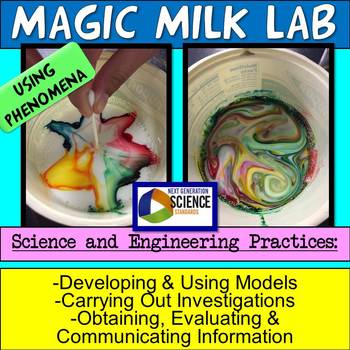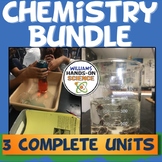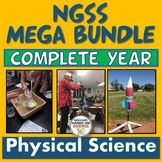Molecules Compounds NGSS PS1.A Lab Developing and Using Models
- Zip
What educators are saying
Also included in
- This NGSS bundle has everything you need for Structure and Properties of Matter (complete distance learning unit), PS1.B PS3.A Chemical Reactions Google Ready Bundle (complete distance learning unit) Chemical Reactions, Definitions of Energy, States of Matter, Periodic Table, Chemical Reactions, ConPrice $69.97Original Price $115.20Save $45.23
- This bundle is a time-saving, comprehensive and user-friendly complete year bundle for physical science Teachers that will streamline your teaching experience effortlessly! Every lesson is meticulously planned and just a click away. This extraordinary bundle is a treasure trove of engaging resourcesPrice $176.00Original Price $311.50Save $135.50
Description
This lab will wow kids! When they dip the soap covered Q-tip in the milk and food dye it makes an amazing pattern like magic! The students have no idea why, but it engages them in a way that makes them want to know the science of why the food dye moves and creates a pattern. A major component in NGSS is using phenomena to engage kids and this lab has got it! After observing the movement of the food dye, the students create a model to try and explain why it moves. Developing and using models to try and explain phenomena is another very important and powerful component of NGGS.
I start by telling the students we are doing this lab a little differently. I tell them that they don’t know what will happen and probably won’t know why. I model how to do the lab, go over what materials they need and away they go! Modeling and conducting the lab only takes about 20-30 minutes.
I give them about 30 minutes to do the definitions and make their model/diagram. After that we have a class discussion about why they think the food dye moved. Some students actually get it right and it really boosts their confidence in science. It’s much more powerful than the teacher using a PowerPoint and lecture.
I then give them the “Post Lab Reading”. It’s a two paragraph scientific explanation of why the dye moves. They now can revise their model. Model revisions are one of the most important parts of developing and using models because it adds a major metacognitive part to the activity. Doing the definitions, making their first model and then revising their model takes another 30-40 minutes.
TERMS OF USE
• All rights reserved by Williams Hands On Science, Inc.
• This product is to be used by the original purchaser only.
• Intended for classroom and personal use only.
• Copying for more than one teacher, classroom, department, school, or school system is prohibited.
• This product may not be distributed or displayed digitally for public view.
• Failure to comply is a copyright infringement and a violation of the Digital Millennium Copyright Act (DMCA).
If there are any errors or questions, please contact me through TpT or email me at:
williamshandsonscience@gmail.com
Thank you for taking a look!
Please follow me on TpT for new products and check me out on Instagram for my products in action!
https://www.instagram.com/williams_hands_on_science/
Diet Coke and Mentos 5e Lab
Chemical and Physical Changes Card Sort
Elements, Atoms, Compounds and Molecules Card Sort
Flipping the Classroom Periodic Table Frayer Models
Physical Science Scaffolded Notes
Chemical Reactions Stop Motion
Physical Science Growing Bundle
Check out my bundle that includes all of my physics products NGSS Physics Resource Bundle







